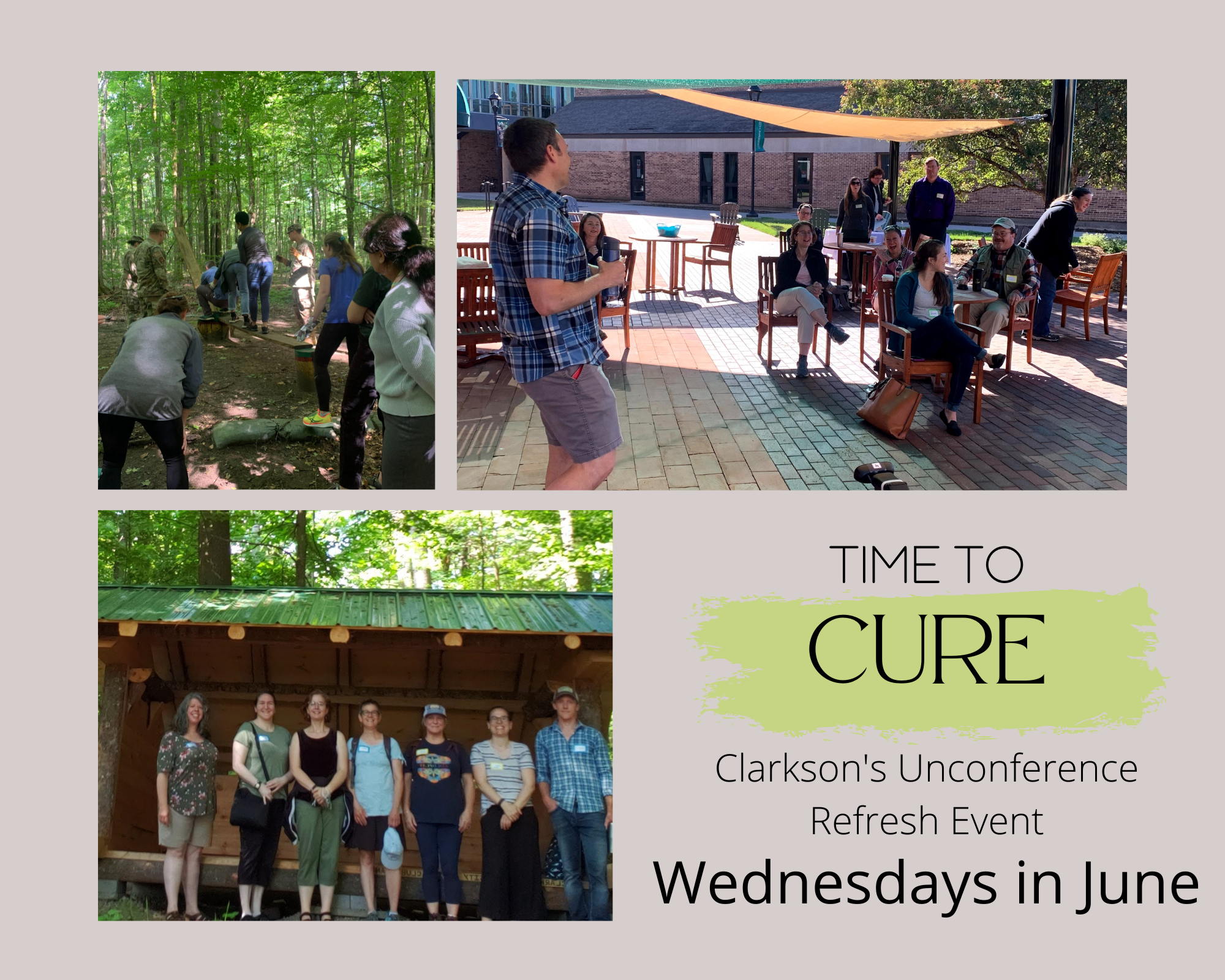Friday, April 19th
12:30 – 2:30 pm
Hamlin-Powers lawn
Come plant a tree for Arbor Day! We will be planting in front of Hamlin-Powers along Maple Street (yes, we will be planting maple trees, among others). This event is being organized by the campus tree committee, the grounds department, and Synergy. We will have tools available for volunteers and Eric Parkman from the grounds department will be there to make sure trees are planted correctly.
Campus Tree Committee: Clarkson is registered in the Tree Campus USA program. We have a dedicated campus tree committee. The committee has worked to develop a campus tree inventory and a tree management plan that identifies best practices. We track the expenses and labor that Clarkson invests into our trees and we report out to the Arbor Day Foundation. The tree committee is currently working on a plan to address the emerald ash borer, an invasive insect that is expected to kill all ash trees in our region that are not chemically treated.
Grounds department and Sustainability, 3.97/4 points!: The Institute for a Sustainable Environment has recently submitted an in-depth campus sustainability report to the Association for the Advancement of Sustainability in Higher Education (AASHE). Our grounds department scored very high. Out of the hundreds of acres that Clarkson owns and manages we apply chemical fertilizers and pesticides to a very small percentage of our land. We are fortunate to live in a lush and healthy ecosystem. We only use chemicals on athletic fields and on the Cheel lawn. The rest of our land is managed organically. We follow organic principles although we do not have a third party certification for this. At the time of our previous AASHE report in 2016 we were treating 57 acres with chemicals. Grounds has consciously reduced that to 11 acres. Our grounds department has been moving towards organic stewardship.
In addition to this metric the Clarkson grounds department receives credit from AASHE for managing a very biodiverse landscape. For habitats on campus we have vernal pools, beaver wetlands, riparian zone/forest, old growth hemlock forest (assessment by Jon Rosales, a researcher from St. Lawrence University), cedar swamp, shrub/scrub wetlands, herbacious emergent wetlands, beech/maple/yellow birch forests, white pine, ash swamp forest. Some valued plant species also find their homes in our wild areas: ‘yellow lettuce’ (Lacttuca hirsute) is endangered in New York State and a Pyrola and a Botrychium fern are state heritage list plants. Our species of greatest conservation need include blue spotted salamanders and blandings turtles.

